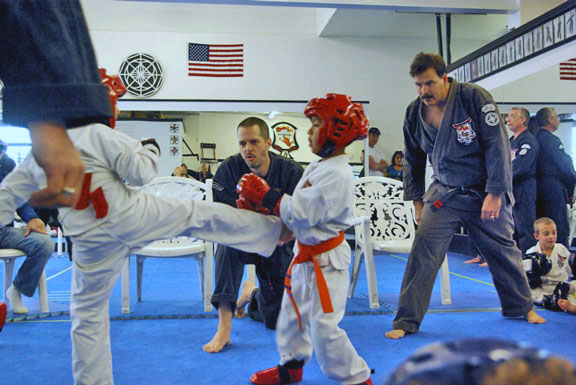What is Kenpo?
A Very Brief History
The martial art of Kenpo Karate has its origins in China and was brought west by Chinese and Okinawan people who immigrated to Hawaii. Born in Honolulu, our Senior Grandmaster Mr. Edmund K. Parker learned Kenpo Karate as a young man. In 1963, Mr. Parker published his book "Secrets of Chinese Karate" which traced the roots of the Ed Parker Kenpo Karate System back to the monk Tamo of the Shaolin Monastery around 515 A.D.. During the course of his life Mr. Parker developed and evolved his art into the practical form of self defense that we have today.
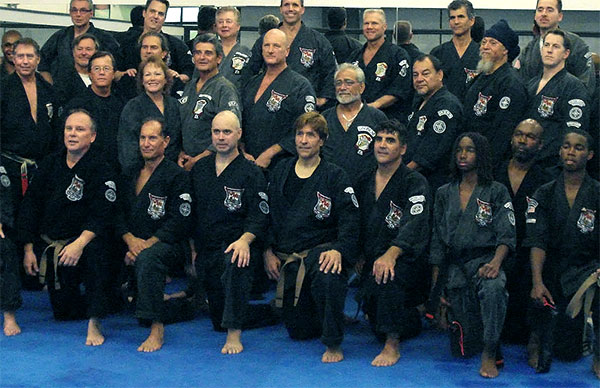
Core Curriculum
The study of Kenpo Karate is mainly comprised of four complementary components
Basics
The foundation of all martial art systems, basics include practice of stances, foot maneuvers, blocks, punches, kicks, and the use of all other natural weapons on the human body. They are repeatedly practiced – sometimes with bags or pads – to allow the student to isolate and develop each skill area.
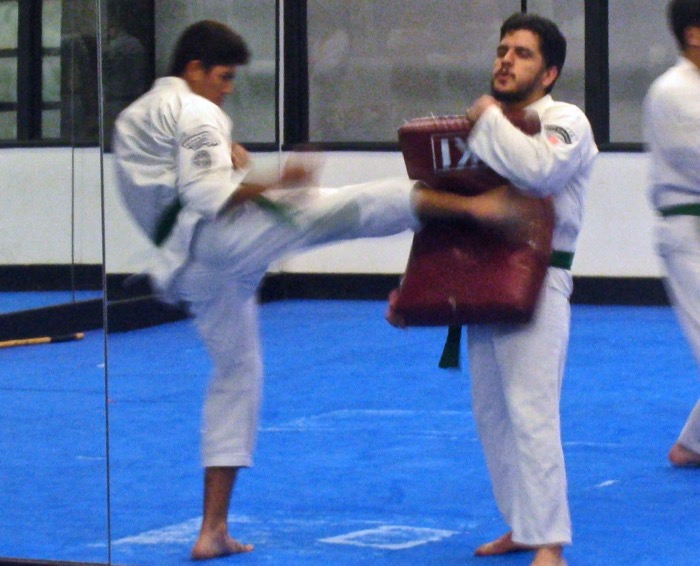
Forms and Sets
Forms, or "kata" as they are sometimes called, are individual exercises performed as a linked series of movements that teach various fighting themes in Kenpo Karate. They help to practice basic skills while moving, they teach timing and sequential flow and they provide a platform for the student to focus on scenarios with multiple attackers.
The term "Sets" refers, in Kenpo Karate, to a specific series of movements featuring one type of weapon. For instance there are Sets that teach blocking movements, striking movements, kicking movements, etc.. Sets are done as isolation exercises. So for instance, when performing a blocking set, the student would stay in a horse stance and use only their arms. In like manner, a kicking set would be done in motion but without any arm movements. Sets provide another way of training the body to perform Basics in motion.
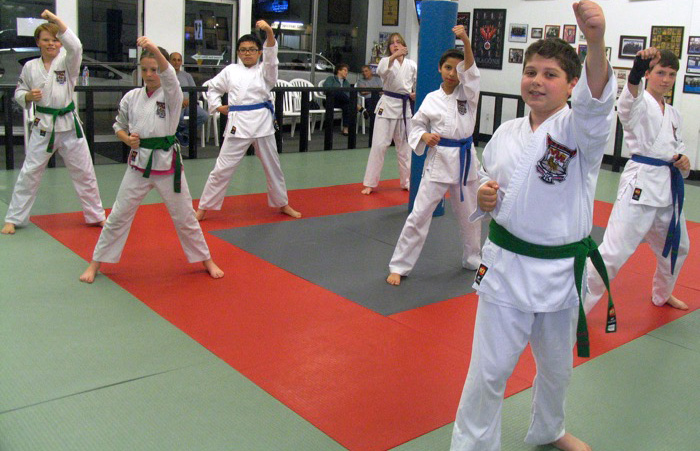
Defense Techniques
At the heart of the Kenpo Karate system are Self Defense Techniques. These are sequences of motion practiced with a partner. One person performs some type of attack and the other person runs through a series of movements meant to defend against that type of attack.
While Self Defense Techniques are groups of movements which must be learned and practiced, it should be stressed that these are not fixed formulae for responding to specific attacks. Grouping movement combinations into Self Defense Techniques provides the opportunity for a person to safely and repeatedly practice on another person(s) and explore principles of offense and defense from a vast pool of choices. Through repetition, these movements become part of each student's unconscious response to an attack. By the time a student reaches Black Belt they are proficient in defense against most any means by which one or more persons can attack them.
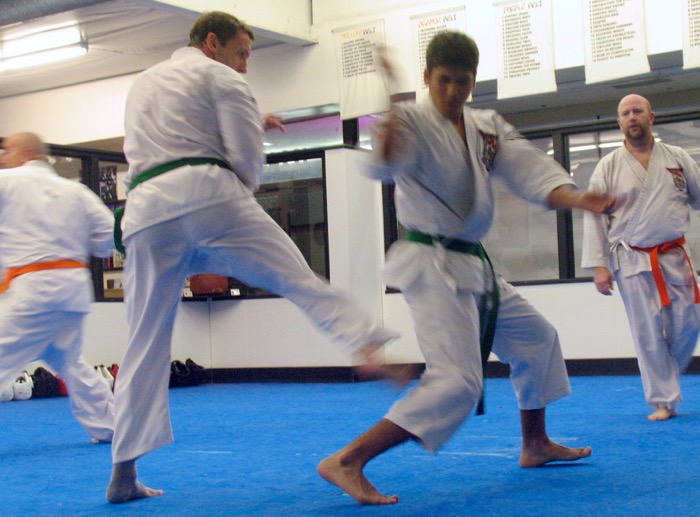
Freestyle Sparring
This term refers to real-time, person versus person fighting with the use of protective gear such as gloves and head protectors. The purpose is to practice one's skills in a realistic and free-flowing environment without harming each other. Sparring teaches students how to use their basics, timing, and tactics to properly defend themselves against another person in unpredictable situations. They learn to persevere through challenging situations by experiencing a competitive atmosphere. Coaching by our instructors helps students improve their skills.
